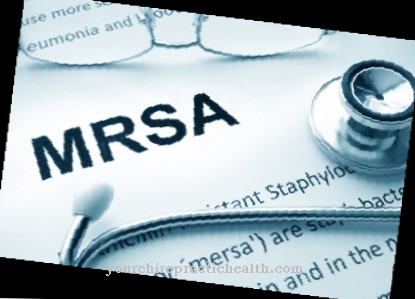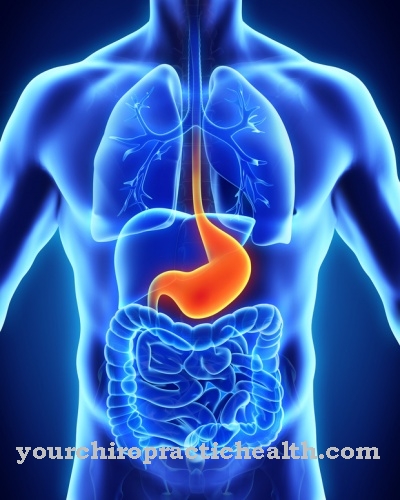The medicinal active ingredient and drug Idarubicin is a common cytostatic drug used to treat acute leukemia. Due to its chemical properties, the substance is assigned to the class of anthracyclines and is usually administered as a solution for injection.
What is idarubicin?
With idarubicin, often too Demethoxide unorubicin called, it is a medicinal substance that is administered as part of a comprehensive chemotherapy treatment to combat acute leukemia.
Idarubicin is taken parenterally through a solution for injection, although the drug is sold as a capsule, solvent, or powder. Idarubicin is given to the treated person under medical supervision by an infusion directly into the bloodstream. This achieves rapid effectiveness.
In chemistry, idarubicin is described by the empirical formula C 26 - H 27 - N - O 9, which corresponds to a moral mass of about 533.95 g / mol. Idarubicin is thus similar to the closely related active ingredient daunorubicin (empirical formula: C 27 - H 29 - N - O 10, moral mass: 527.52 g / mol). Compared to this, however, idarubicin is more liposoluble due to the lack of a methoxy group, which makes it much easier to take up into the cell.
Idarubicin achieves its effect by triggering an interaction with topoisomerase II within the targeted cancer cell. Because of its effects, idarubicin is considered a cytostatic agent. These are cell-toxic substances that are deliberately used in human medicine to kill cancer cells.In contrast to some other cytostatics, idarubicin is used in some patients (e.g. AML patients) not for palliative therapy, but exclusively for curative treatment.
Pharmacological effect
Idarubicin is a cytostatic agent. The active ingredient is basically toxic. However, as part of a medically supervised chemotherapy, it is administered to patients consciously and in a controlled manner in order to kill cancer cells. Idarubicin makes this possible by penetrating the cell and there inhibiting the enzyme topoisomerase II by intercalating into the cell's DNA.
In medicine, intercalation is understood to mean a reversible storage of molecules in chemical compounds. Because of the activities of idarubicin, the cancer cell is no longer able to produce nucleic acid and protein synthesis. The growth of the cell is inhibited and prevents it from spreading.
The percentage of the active substance that is available in the metabolism (bioavailability) is between 18 and 39 percent. That is a comparatively good value. After ingestion, idarubicin can be found bound to up to 97% of plasma proteins.
The metabolism (metabolism) takes place via the liver and thus hepar. Most of the elimination takes place via the bile. Only small amounts of the substance are processed renally (via the kidneys). In the literature, the plasma half-life of idarubicin is set between a minimum of 10 and a maximum of 39 hours.
Medical application & use
Idarubicin is primarily indicated for leukemia. This is treated with comprehensive combination chemotherapy. Idarubicin plays a crucial role within this.
Elderly people with AML (amulter myeloid leukemia) do not require pre-treatment. However, they must not undergo palliative therapy with idarubicin. Only curative treatment is indicated here.
The drug is usually sold as a powder, solvent or capsule. A solution for injection is prepared from these by medical professionals before they are administered to the patient. In certain cases an infusion may also be indicated. Independent ingestion by the patient, however, is not permitted.
Risks & side effects
Since idarubicin is a very effective drug, undesirable side effects can occur during treatment. These are often reflected in various blood count disorders, which is a typical side effect of cytostatics.
In particular, a pathologically reduced level of neutrophils (neutropenia), a greatly reduced number of white blood cells (leukopenia) and a reduction in hemoglobin (anemia) can be triggered by treatment with idarubicin.
Increased bilirubin levels are also known side effects of idarubicin. In addition, patients also report a general feeling of weakness, fever, gastrointestinal complaints and cardiac arrhythmias.
Allergic reactions are also possible. These are usually expressed as severe skin reactions such as itching, rashes or redness. In this case, treatment should not be continued as there is a contraindication. This is also the case with insufficiency of the liver or kidneys.
There is also a contraindication from a medical point of view during pregnancy and breastfeeding. In addition, treatment with idarubicin should also be avoided in the case of severe cardiac disorders (e.g. fourth-line heart failure or after a heart attack).












.jpg)



.jpg)










.jpg)
